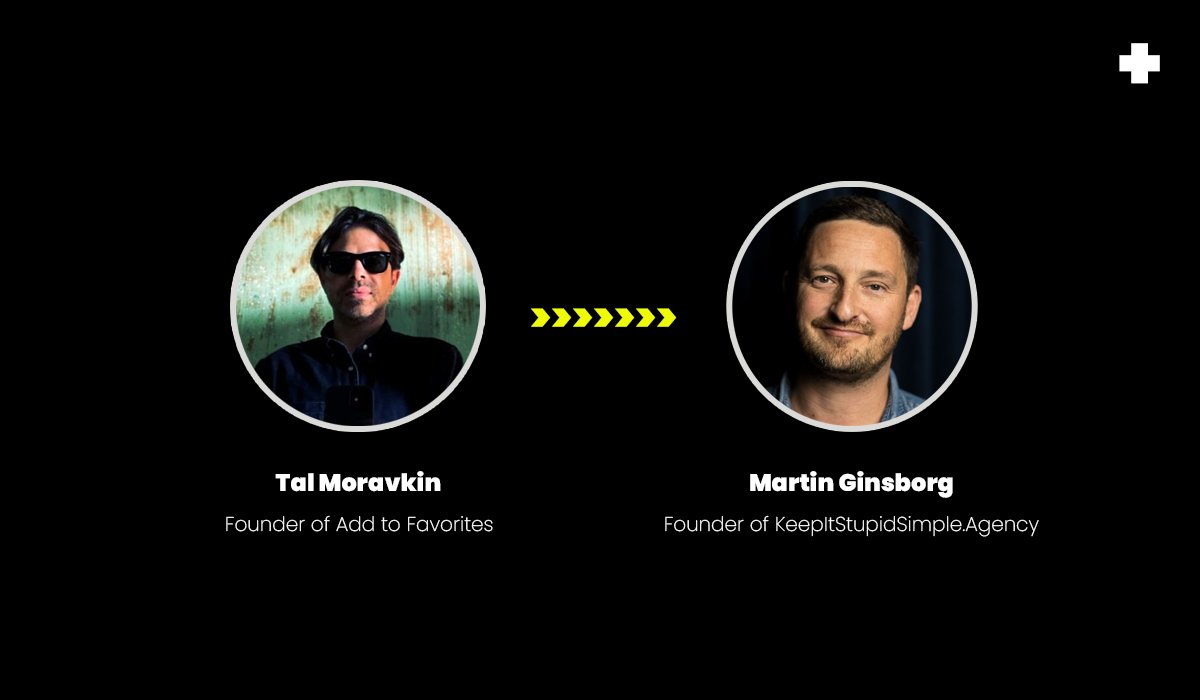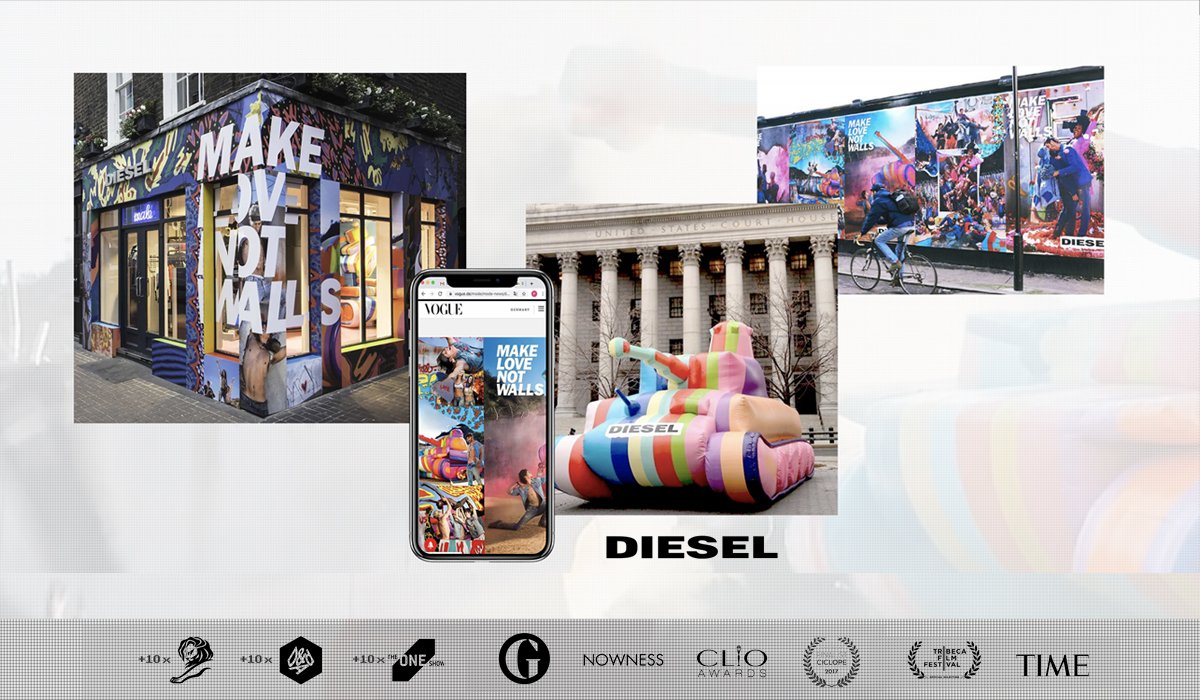One on One with Martin Ginsborg from KeepItStupidSimple.Agency
One of our favorite award-winning creative agencies talks about creativity, what's really important in your next campaign, and everything in between.
1.Please tell us a bit about your early days. How did you start your creative journey?
I started out doing improv theater, in order to delay my university application as long as possible. A creative director came by, saw the show, and asked if I wanted to write ads instead. And get paid. I never looked back.
2.What do you think about the movement of talented creatives from big agencies? What are the pros and cons of this trend?
We wrote a film about “the great advertising migration” last year called “Kill Your Darlings' '. There was great personal satisfaction to be part of telling this story in a nuanced long-format way. Because, it’s not just a story about talents leaving. It’s a story about the future of creativity. What its worth. And where you might (not) find it.
3.How do you tackle performance marketing and data within your creative work? Do you think it should be separate from brand campaigns or included as a part of the same production or idea?
Brian Cheskys recently said he thinks the role of marketing is one of education, not “buying people'', and AIRBNB uses performance marketing, simply as a laser to balance supply and demand. If you have this kind of understanding of why you use performance, then yes, you can do both. But the truth is that a lot of big companies still forget the importance of defining who they are, and what they stand for, in the first place, and go straight to the “buying people part”. For that reason, I’d say separate it for a second. Refine, define, sharpen your brand idea first. And worry about the performance later in the process.
“
Brian Cheskys recently said he thinks the role of marketing is one of education, not “buying people’’, and AIRBNB uses performance marketing, simply as a laser to balance supply and demand.
”
4.Are there brands or campaigns from recent years that aspire to? Which brands have you learned from? And what did you learn?
Perhaps, it’s less individual ads that I admire most, but brands that dare to roll up their sleeves and make giant ripples. Patagonia donating the entire company to fight climate change comes to mind. But AIRBNB's bold switch from performance ads to innovation and PR as the “most important channel”. OATLY ads are great, but what truly amazes me isn’t just the mere consistency of great ads, but the profound change a company can experience, when putting creativity at the heart of the machine room. Of course everything in AI is also fun to track along with, great examples like AI generated Seinfeld “Nothing Forever” and the deepfake “Infinite Conversations” between Werner Hertzog and Slavoj Žižek.
5.What do you think the next challenge in creative work will be? Does AI play a part in it?
Creativity is the ultimate moonshot for artificial intelligence. It is fundamentally going to change how we make, create and experience ads, films, stories of all shapes and sizes. CHAT GPT, DALL-E, tomato-tomato. They are coming to an agency/production/mediacompany and client near you. But like Newton said, for every action, or force, there is an equal and opposite reaction.
6.As a freelance and smaller agency, how do you manage slower months with less work? How do you deal with stress and anxiety in general? Is there a stark difference between working as an independent and in an agency?
Since we started KeepItStupidSimple in 2020, Lars and I have been trying to, well, keep it stupid simple. No layers. No committees. No middlemen. No B.S. Work with clients and agencies we like. Do the kind of work we enjoy. Have as much fun doing it as we can. Time off was never a problem to eiter of us. When we don’t make ads, Lars is building a hotel in Sri Lanka, and I’ve started a CBD-powered skin care brand with a dermatologist friend (Ad: skinatwork.dk). We don’t have time for anxiety.
“
Creativity is the ultimate moonshot for artificial intelligence. It is fundamentally going to change how we make, create and experience ads, films, stories of all shapes and sizes
”
7.How do you envision the work process when working with a brand strategy and brand DNA in fast-paced, dynamic, and ROI product-based companies? As companies face product and audience changes very quickly, how do you recommend managing it on a creative level?
I don’t.
a great creative idea is a great creative idea, no matter how fast you sling the product.
8.What are Let’s Kiss’s business philosophy and strengths? How do you envision your future and what are you most interested in taking part in?
We’re certainly not everyone's cuppa. That’s usually plain as day after the first tea. Because we don’t have a set up with strategists, creatives, designers, juniors, account follks, producers or whatnot. — We can afford to be honest. We only take in a small handful of clients at a time, and bring on board a few select freelancers to help if needed. We always focus on the big — stupid, simple — idea that makes everyone excited about going to work in the morning. Whatever shape it takes. If the chemistry isn’t there in the first meeting. We walk. Regardless of the money or name on the door.
9.What would you recommend a new brand, company, or start-up do when it comes to its brand story and creative strategy? What is the first must-do for their business growth?
Having started a skin care brand myself this year, with limited time and funds, I’m taking a healthy dose of my own medicine. It’s easy to stare yourself blind on the product itself, and forget everything around it. Why does it exist in the first place? What's its role in culture? How do you bring its philosophy to life, and make it stand out in a crazy world? How do you make people not just buy your product, but join your particular revolution? I try to remember that while I can, and do sometimes buy “eyeballs” on social media, I cannot buy people’s hearts.
“How do you make people not just buy your product, but join your particular revolution? I try to remember that while I can, and do sometimes buy “eyeballs” on social media, I cannot buy people’s hearts.
”
10.A not-so-relevant question: Please share a funny, interesting, weird, life-changing, or feel-good story that you have experienced on your personal journey.
I once had two bosses, who happened to be former Creative Director and Client at Nike. Back in the days when Nike was the shizzle, and they were breaking all the rules. I asked them, how did all that great stuff actually come about? The answer was this: After days of agency-client meetings, about this and that and people arguing in circles about creative strategy, audience research, media plans and blah blah. The two of them would head to a pub, ignore everything, have a few pints, and come up an idea they both thought would be brilliant. And that’s it.
Martin Peters Ginsborg is a Creative Director, Copywriter, Idea Wrangler and Passionate Baker of Danish Rugbrød. As a former Executive Creative Director for UncleGrey & Grey Nordic, and Partner and Executive Creative Director of Anomaly Amsterdam, Martin is a truly global creative with a proven track record, on both sides of the Atlantic Ocean.
Martin has helped agencies grow from New York to Europe, and develop stronger relations across the Nordics. He has led creative teams into battle across a range of brands with a creative-first, media agnostic approach. His work stretches from global ad campaigns and sustainability strategies to designs and product innovations for brands like; Adidas, Carlsberg, Weber, Johnnie Walker, Reebok, Disney, NFL, Marriott, Converse, IKEA and Diesel. And it has been recognized by both industry magazines, award shows and film festivals alike.



